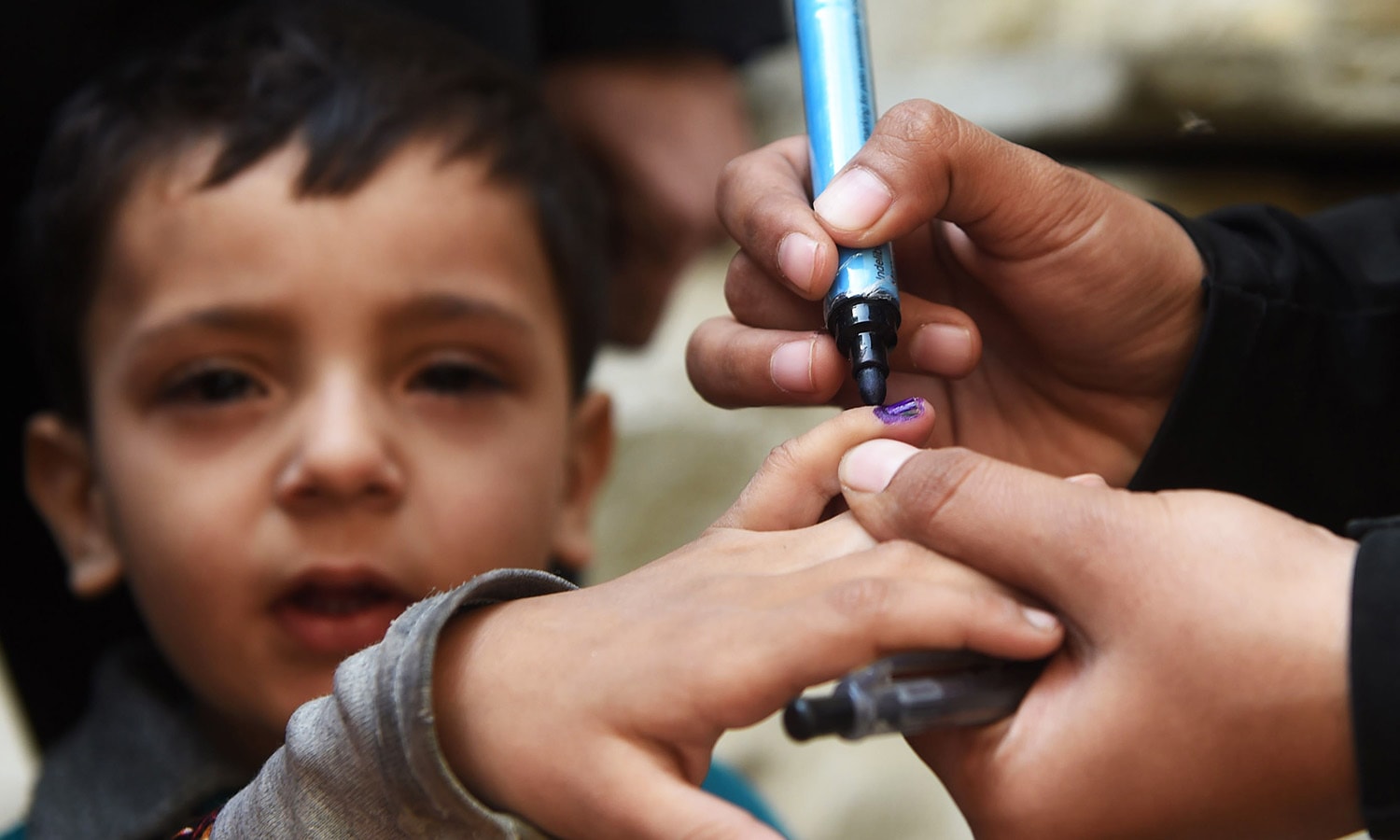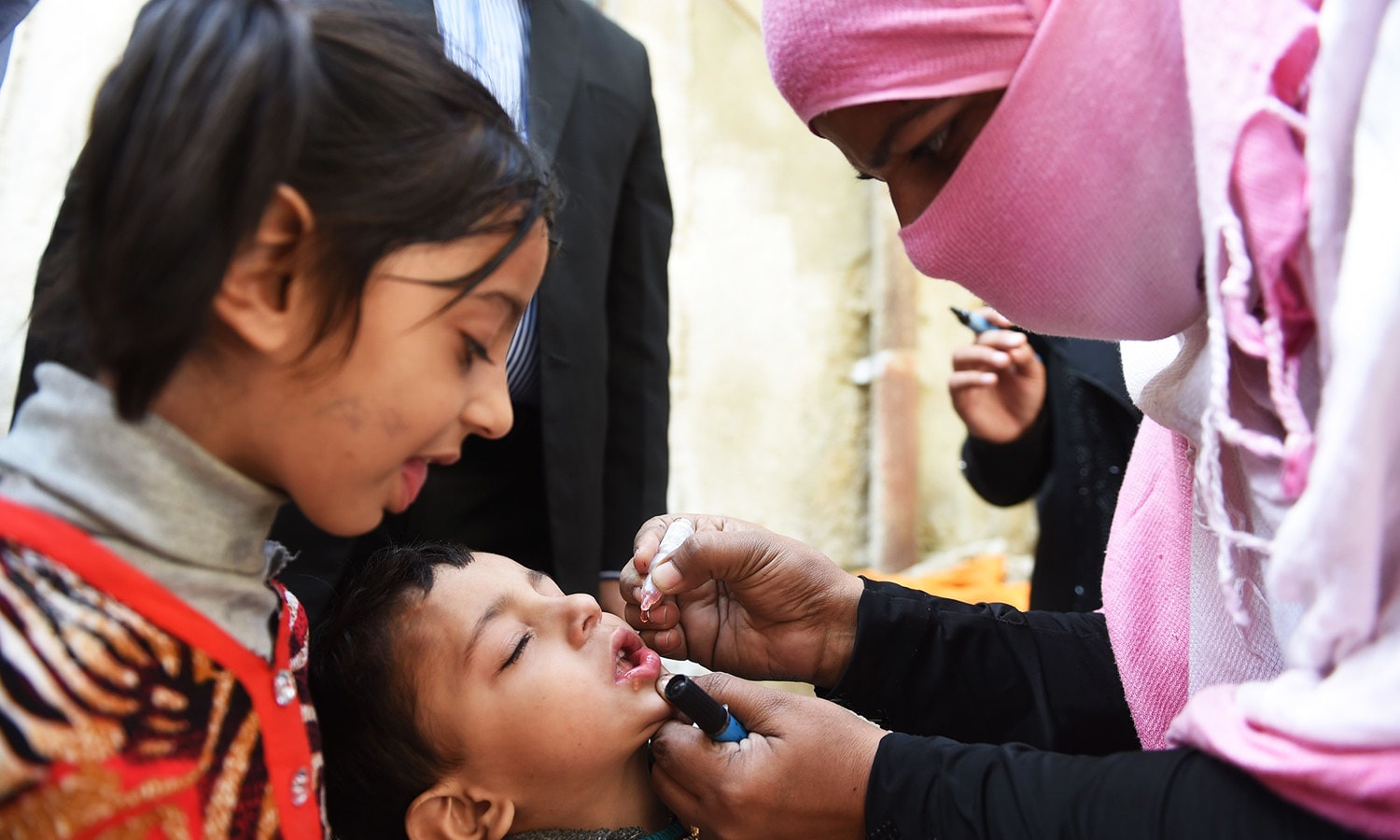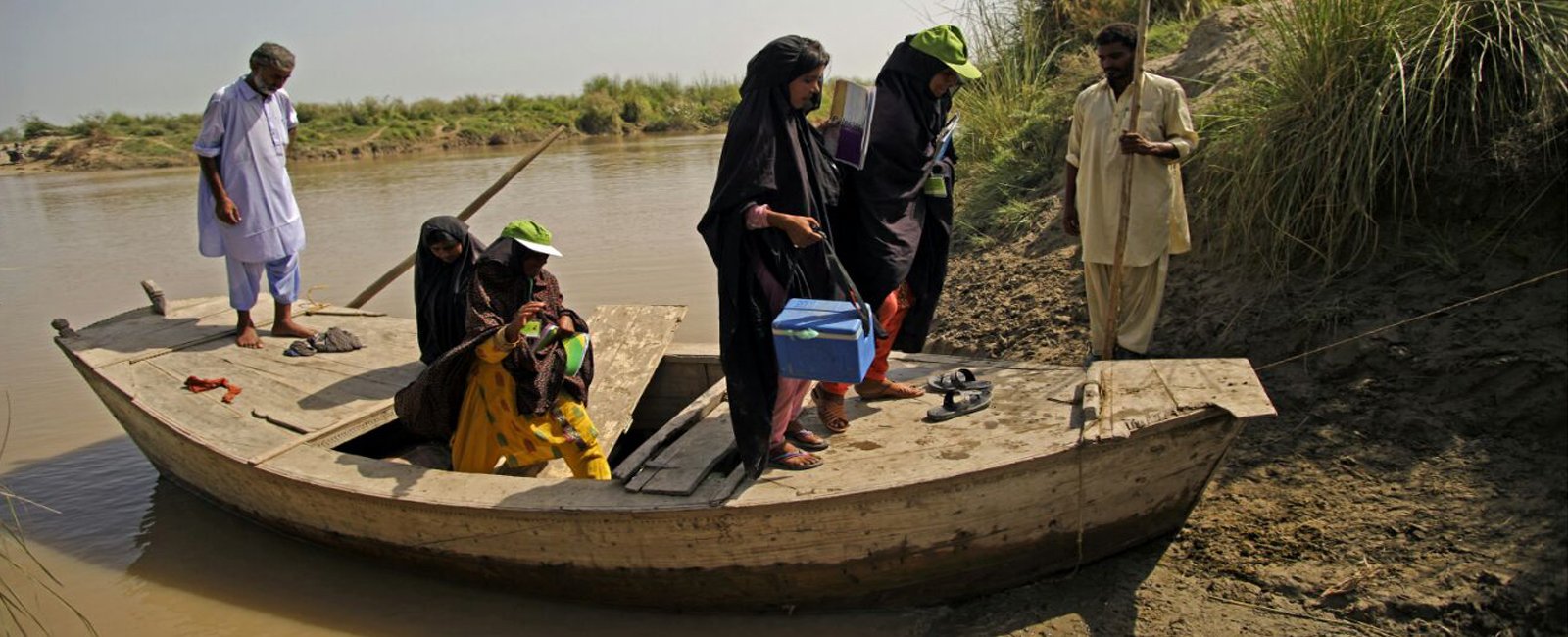Lessening stream: Mutual efforts take Pakistan on brink of polio eradication

As World Polio Day is marked across the globe on Tuesday, Pakistan remains one of the three countries where the virus prevails. But the country has come a long way in its fight against polio, with each passing year seeing a decrease in the number of cases and affected areas.
“We focus on getting the right person for the right job,” said Dr Sarfaraz Afridi, World Health Organization’s national coordinator for Federally Administered Tribal Areas, from where no case of polio has been reported since July 27, 2016. “We’ve always taken locals on board for the campaigns so that the process of creating awareness among people of their area does not stop.”
Fata’s is a case in point as it was Pakistan’s dense reservoir of polio virus until last year, but so far no case has been reported from any of its agencies.

Community ownership
According to Afridi, cooperation of the law-enforcement agencies and locals has been the key in combating polio in Fata. One of their efforts to keep locals in the loop is the community-based vaccination (CBV) project, started earlier in the year. “It has so far been put into action in North Waziristan, South Waziristan and Frontier Region Bannu, but will soon be extended to other areas on the tribal belt.”
However, locals have been engaged in the campaigns not just in Fata but across the country as it has helped in addressing individual concerns, which often revolve around superstition and rumours.
In Balochistan, the CBV strategy was implemented to overcome security threat to polio workers, said emergency Operation Centre media spokesperson Zafar Baloch.
“In this basically, a member of local community is selected to conduct vaccinations. The people of community are less resistant as they personally know the person.”
Speaking about the security aspect, he said this method is securer because the selected person is provided with vaccinations a day before so not a lot of people gather in one place for immunisation drive.
“The community member then travels door-to-door to administer anti-polio drops,” he remarked, adding that as many as 200 to 300 children are administered vaccination in a month.
Moreover, the help of cleric community is also taken to convince people there is no harm in taking anti-polio drops, said Zafar, adding that one cleric usually travels with a polio worker to encourage people.
So far in the year, one case of polio has been detected in Balochistan, from Qilla Abdullah district.
While reasoning the prevalence of the crippling virus in Balochistan, Zafar the virus could have come from Afghanistan.
He added that father of the child, who was diagnosed in July, is a driver who daily crosses into Afghanistan via the border near Chaman.
“It is possible that the patient got the virus from its circulation in Afghanistan as his father crosses the border on daily basis.”
But non-government organisations, such as WHO and United Nations Children’s Fund, and the government have continued their endeavours against polio.
“All stakeholders sit together to strategise and work together. They are all in coordination in this regard,” Zafar remarked.
Emergency Operations Centre was established in Balochistan in 2015 after national emergency was implemented to fight polio. “So far we have been 95% successful in curbing the virus,” he shared.
In Sindh too ownership by communities of the battle against polio has borne fruit as only one case has been reported in the province since 2016.
| Places | Cases |
|---|---|
Diamer, Gilgit Baltistan | 1 |
Lakki Marwat, Khyber Pakhtunkhwa | 1 |
Lodhran, Punjab | 1 |
Karachi, Sindh | 1 |
Qilla Abdullah, Balochistan | 1 |
According to Emergency Operations Centre (EOC) for Polio Eradication and Immunisation Cell Coordinator Fayaz Jatoi, Sindh has come a long way in combating polio virus as 2017 has so far seen only one case whereas, in 2014, 30 cases were reported from the province.
“Community ownership of polio eradication effort is key to success in defeating the virus,” he was quoted as saying in a press release issued by EOC. “We must keep the community on board in polio eradication – these vaccinations are to safeguard the future of their children and they must be involved in every step of the campaign.”

No stopping
In Punjab, the government focuses on two steps – vaccination and routine immunisation, Expanded Programme on Immunization (EPI) Director Dr Munir shared.
He added that WHO, under which EPI works, has tried to raise awareness through health camps and distribution of brochures.
Moreover, sample tests are taken every month in Punjab to check the threat of the virus, said Munir. The tests are conducted in major cities such as Bahawalpur, Lahore, Rawalpindi and Multan among others.
“One month the tests came out to be positive in Rawalpindi but that threat has now been combated,” according to Munir.
The case that has been reported so far in 2017 from Punjab is also of a child who was administered anti-polio drops, Munir said. The four-month-old, from Lodhran, had an underdeveloped immunity – the child developed the virus despite being given the drops, he added.
The idea of campaigns being carried out frequently was also flanked by Jatoi, who said parents must understand that they need to give the polio vaccine every time it is offered until their children are five years old.
Nevertheless, a country where number of polio virus cases was a three-digit figure until 2014, coming down to a single digit is a laudable jump.
Cover image taken from endpolio.com.pk





